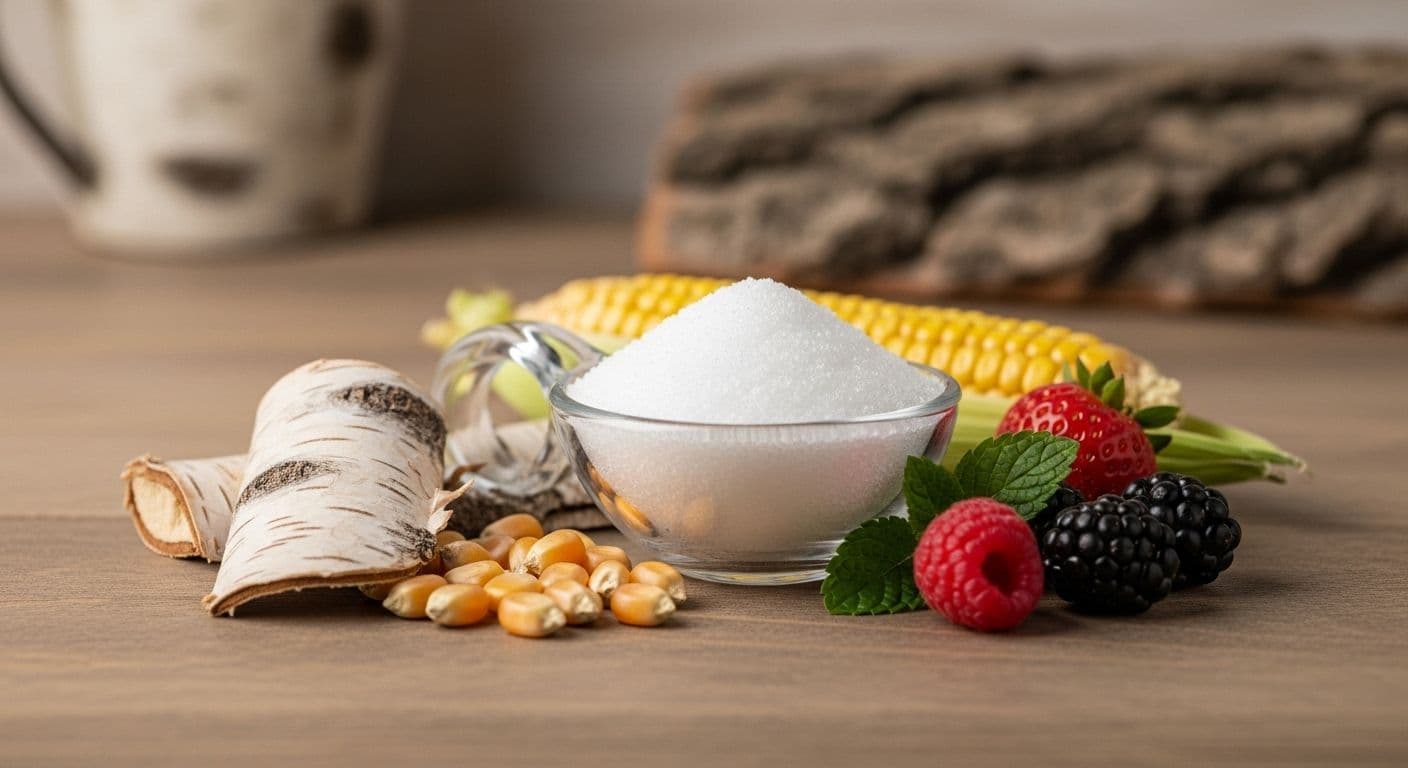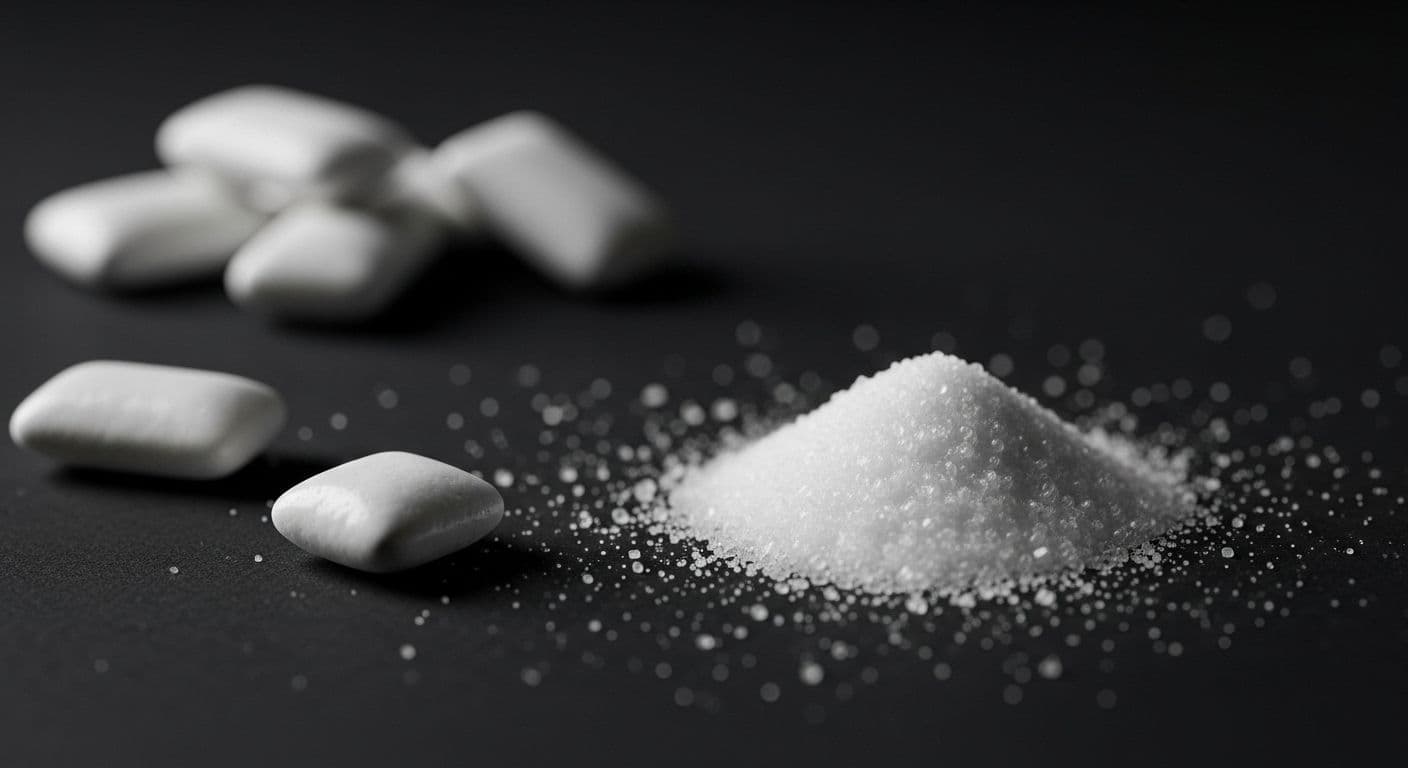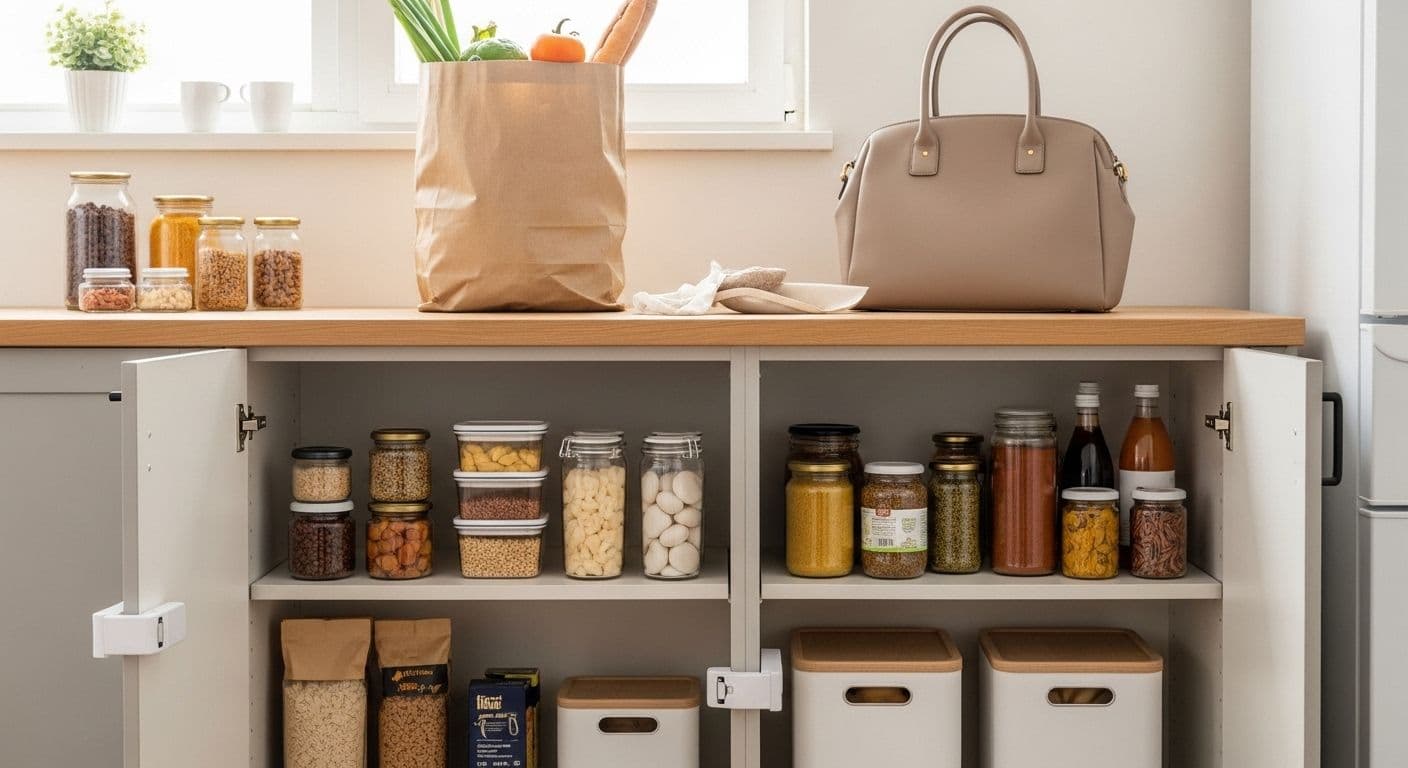As a loving dog owner, you’d do anything to protect your furry friend. You carefully choose their food, provide plenty of exercise, and shower them with affection. But a hidden danger could be lurking in your pantry, purse, or medicine cabinet: xylitol.
This common sugar substitute, found in a surprising number of everyday items, is perfectly safe for humans but extremely toxic to dogs. Understanding the risks associated with products with xylitol is a critical part of modern pet ownership. This guide will walk you through what xylitol is, why it’s so dangerous, where to find it, and exactly what to do to keep your beloved companion safe.
Xylitol Basics
Before diving into the risks, it’s important to understand what this ingredient is and why it's so prevalent in human products. A quick look at the basics reveals why every dog owner needs to be aware of xylitol.
What Is Xylitol?

Xylitol is a sugar alcohol, a type of carbohydrate that occurs naturally in small amounts in fruits and vegetables like berries and corn. For commercial use, it's typically extracted from corn fiber or birch trees. It looks and tastes almost identical to table sugar—a white, crystalline substance with a pleasant sweetness.
Why Is It in Human Foods?
You'll find xylitol in countless 'sugar-free' products for several key reasons:
- Low-Calorie Sweetness: It offers the same level of sweetness as sugar but with about 40% fewer calories, making it popular for weight management.
- Diabetic-Friendly: Xylitol has a very low glycemic index, meaning it doesn't cause a spike in blood glucose levels, which is ideal for individuals managing diabetes.
- Dental Health Benefits: Unlike sugar, xylitol actually fights tooth decay. It inhibits the growth of cavity-causing bacteria (Streptococcus mutans) and helps reduce plaque buildup. This is why it’s a star ingredient in sugar-free gum, mints, and toothpaste.
- Other Uses: Beyond food, it's used as a moisture-retaining agent (humectant) in skincare products and for its antibacterial properties in some medications and nasal sprays.
The Danger for Dogs
While beneficial for people, xylitol is a poison for dogs. Even a tiny amount can be catastrophic and potentially fatal. When a dog consumes xylitol, their body absorbs it rapidly. The pancreas mistakes it for real sugar and releases a massive, potent surge of insulin.
This insulin flood causes a sudden and severe drop in blood sugar, a condition known as hypoglycemia. Symptoms can appear alarmingly fast, often within 10 to 60 minutes, and include vomiting, weakness, difficulty walking, tremors, and seizures. In higher doses, xylitol can also lead to devastating liver failure. Because it's found in so many household items—from peanut butter to vitamins—vigilance is your best defense.
Immediate Action Required: If you ever suspect your dog has ingested a product containing xylitol, treat it as an emergency. Contact your veterinarian or a pet poison control hotline immediately. Do not wait for symptoms to develop.
Why It’s Dangerous
Why is Xylitol Bad for Dogs?
Understanding exactly how xylitol harms a dog's body highlights the seriousness of the threat. The biological reaction is swift, severe, and can impact multiple vital organs, making immediate veterinary intervention non-negotiable.
How Xylitol Affects Dogs
A dog’s system simply isn't designed to process xylitol. The massive insulin release triggered by its ingestion leads directly to two life-threatening conditions:
- Severe Hypoglycemia: The sudden drop in blood sugar starves the brain and other organs of the energy they need to function. This can quickly lead to disorientation, seizures, collapse, coma, and even death.
- Acute Liver Failure: In cases involving larger doses, xylitol can cause acute liver injury. The exact mechanism is not fully understood, but it results in the rapid destruction of liver cells, which can be irreversible and fatal.
Understanding Toxic Doses

It doesn't take much xylitol to cause serious harm. The toxicity is based on the dog’s body weight, and the amount of xylitol can vary dramatically between products.
- For Hypoglycemia: A dose as low as 0.1 grams of xylitol per kilogram of body weight can trigger a dangerous drop in blood sugar.
- For Liver Failure: Doses exceeding 0.5 grams per kilogram of body weight are associated with acute liver failure.
To put that in perspective, a single piece of sugar-free gum can contain anywhere from 0.2 to 1.0 grams of xylitol. This means just one or two pieces could be enough to cause severe hypoglycemia in a 10-pound dog.
Symptoms of Xylitol Poisoning
Time is critical, so recognizing the signs of xylitol ingestion is key. Symptoms can progress rapidly.
Early Warning Signs (Appear within 10-60 minutes)
- Vomiting
- Weakness or lethargy
- Disorientation or appearing 'drunk'
- Staggering or difficulty standing (ataxia)
- Tremors or seizures
- Collapse
Severe or Late-Stage Symptoms (Can appear 8-72 hours later)
- Jaundice (yellowing of the gums, skin, or whites of the eyes)
- Bruising or pinpoint bleeding spots (petechiae)
- Black, tarry stools
- Coma
If your dog shows any of these signs, seek immediate veterinary care. If possible, bring the product's packaging with you so the vet can determine how much xylitol was ingested.
Products With Xylitol List
Xylitol is appearing in more products every year. Being a vigilant pet owner means knowing where it might be hiding. Always check the ingredient list on products, especially if they are labeled 'sugar-free,' 'low sugar,' or 'keto-friendly.'
Foods & Edibles
This is the most common category where dogs encounter xylitol.
- Sugar-Free Gum, Mints & Candy: These often contain the highest concentrations of xylitol.
- Peanut & Nut Butters: Some brands, particularly 'natural' or 'sugar-free' varieties, use xylitol for sweetness.
- Baked Goods & Desserts: Watch out for sugar-free cakes, muffins, cookies, pie fillings, and brownie mixes.
- Other Sugar-Free Foods: This includes ice cream, pudding, gelatin snacks, non-fat Greek yogurt, protein bars, drink powders, syrups, and condiments like ketchup or BBQ sauce.
Oral & Personal Care
Your bathroom cabinet can also pose a risk.
- Toothpaste & Mouthwash: Never use human toothpaste for your dog. It often contains xylitol and fluoride, which are both toxic to them.
- Dental Floss & Breath Mints: These are designed for human oral health and may be sweetened with xylitol.
- Skincare & Cosmetics: Certain lotions, facial cleansers, moisturizers, lip balms, and deodorants use xylitol or its derivatives.
Medications & Supplements
Many over-the-counter and prescription items contain xylitol to make them more palatable.
- Chewable & Gummy Vitamins: Both for adults and children.
- Liquid Medications: Cough syrups, allergy medicines, and other oral liquid suspensions.
- Dissolvable Tablets: 'Meltaway' or orally disintegrating tablets for sleep aids, pain relief, and more.
- Other OTC Products: Throat lozenges, antacids, and some nasal sprays.
Emergency Pet Poison Hotlines: Keep these numbers saved in your phone or on your fridge:
- Pet Poison Helpline: 855-764-7661
- ASPCA Animal Poison Control Center: 888-426-4435
Hidden Names On Labels
Reading the ingredient list is your best line of defense, but manufacturers don't always list xylitol by its most common name. Familiarize yourself with its aliases to ensure you can spot it in any form.
Decoding the Ingredient List
When you scan a label, look carefully for xylitol and its many synonyms. The more you know, the safer your dog will be.
Look for these alternative names:
- Birch Sugar
- Birch Bark Extract
- Wood Sugar
- E967 (its European food additive code)
- Sucre de Bouleau
- Anhydroxylitol
- Meso-Xylitol
- Xylit
- Xylite
- Xylitylglucoside
- Zylatol
- Pentane-1,2,3,4,5-pentol
Tips for Smart Label Reading:
- Check the Nutrition Facts: Xylitol may be listed under the 'Sugar Alcohols' or 'Polyols' sub-category.
- Be Skeptical of Buzzwords: Products marketed as 'Sugar-Free,' 'No Sugar Added,' 'Diet,' or 'Keto' are prime candidates for containing xylitol or other sugar substitutes.
- Note the Ingredient Order: Ingredients are listed by weight. If xylitol or one of its aliases appears high on the list, the product contains a higher, more dangerous concentration.
- Don't Trust 'Natural Flavors' Alone: In some cases, xylitol might be part of a proprietary 'natural flavor' blend and not listed separately.
If you are ever unsure whether a product is safe, the best practice is to avoid giving it to your dog. When in doubt, call the manufacturer or choose a different product you know is pet-safe.
What To Do If Ingested
Discovering your dog has eaten a product with xylitol is terrifying, but your calm and immediate action can make all the difference. Follow these steps precisely.
Your Immediate Action Plan
- Act Immediately: Do not 'wait and see' if symptoms appear. Xylitol poisoning is a time-sensitive emergency where every minute counts.
- Call for Help: Immediately call your veterinarian, the nearest emergency veterinary hospital, or a pet poison control hotline. They will provide life-saving instructions based on your specific situation.
- Gather Information: When you call, be prepared to provide the following details:
- The exact product your dog ate (have the packaging ready).
- An estimate of how much was consumed.
- The time of ingestion.
- Your dog's approximate weight.
- Any symptoms your dog is currently showing.
- Do NOT Induce Vomiting: Never induce vomiting unless you are explicitly instructed to do so by a veterinary professional. Doing so improperly can cause further harm.
Veterinary treatment typically involves hospitalization for blood sugar monitoring, IV fluids, dextrose administration to stabilize glucose levels, and liver protectant medications. With prompt and aggressive treatment, the prognosis for hypoglycemia is often good. The prognosis for liver failure is much more guarded, which is why immediate intervention is so crucial.
Prevention And Alternatives
While knowing how to react in an emergency is essential, preventing access in the first place is the ultimate goal. A few simple changes to your habits and shopping choices can create a much safer home environment for your dog.
Secure Storage Habits

- Get It Off the Counter: Never leave purses, backpacks, or grocery bags on the floor or low surfaces. Store them in a secure closet or on a high shelf.
- Pantry Protection: Store all xylitol-containing foods and products in high cabinets or in a pantry secured with childproof latches.
- Dog-Proof Your Space: When you can't supervise your dog, use gates, crates, or keep them in a completely dog-proofed room.
Safe Swaps and Alternatives
Fortunately, there are plenty of dog-safe options for treats and dental care.
- Peanut Butter: While some smaller or 'health-focused' brands contain xylitol, major brands like Jif, Skippy, and Smucker’s are generally safe. However, always double-check the label, as formulations can change. You can also buy peanut butter made specifically for dogs.
- Dental Care: Use only toothpaste formulated for dogs. For dental health, offer VOHC-approved dental chews, durable chew toys, or natural options like carrots.
- Dog-Safe Human Foods: If you like sharing snacks, stick to safe options in moderation:
- Carrots
- Apple slices (no seeds)
- Blueberries
- Green beans
- Cooked sweet potato
- Bananas
By staying informed, reading labels diligently, and securing your home, you can easily protect your dog from the serious threat of xylitol poisoning. Your awareness is their best defense against this hidden household danger.



